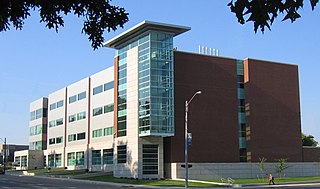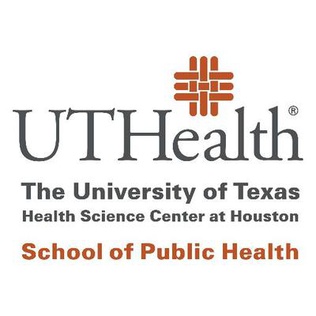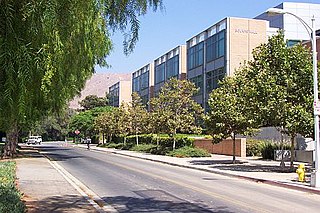
The University of California, San Francisco (UCSF) is a public land-grant research university in San Francisco, California. It is part of the University of California system and is dedicated entirely to health science and life science. It conducts research and teaching in medical and biological sciences.

The Medical University of South Carolina (MUSC) is a public medical school in Charleston, South Carolina. It opened in 1824 as a small private college aimed at training physicians and has since established hospitals and medical facilities across the state. It is one of the oldest continually operating schools of medicine in the United States and the oldest in the Deep South.

Carlos José Bustamante is a Peruvian-American scientist. He is a member of the National Academy of Sciences.

The University of Tennessee Health Science Center (UTHSC) is a public medical school in Memphis, Tennessee. It includes the Colleges of Health Professions, Dentistry, Graduate Health Sciences, Medicine, Nursing, and Pharmacy. Since 1911, the University of Tennessee Health Science Center has educated nearly 57,000 health care professionals. As of 2010, U.S. News & World Report ranked the College of Pharmacy 17th among American pharmacy schools.
The University of Texas Health Science Center at Houston (UTHealth) is a public academic health science center in Houston, Texas, United States. It was created in 1972 by The University of Texas System Board of Regents. It is located in the Texas Medical Center, the largest medical center in the world. It is composed of six schools: McGovern Medical School, The University of Texas MD Anderson Cancer Center UTHealth Graduate School of Biomedical Sciences, UTHealth School of Dentistry, Cizik School of Nursing, UTHealth School of Biomedical Informatics and UTHealth School of Public Health.
The Texas A&M Institute of Biosciences and Technology (IBT), a component of Texas A&M Health, and The Texas A&M University System, is located in the world's largest medical center, the Texas Medical Center, in Houston, Texas. The institute provides a bridge between Texas A&M University System scientists and other institutions' researchers working in the Texas Medical Center and the biomedical and biotechnology research community in Houston. It emphasizes collaboration between member scientists and others working in all the fields of the biosciences and biotechnology. IBT encourages its scientists to transfer discoveries made in their laboratories to the clinic and marketplace.

The University of Texas Health Science Center at San Antonio is a public academic health science center in San Antonio, Texas. It is part of the University of Texas System.

The Weill Cornell Graduate School of Medical Sciences (WCGS) is a graduate college of Cornell University that was founded in 1952 as an academic partnership between two major medical institutions in New York City: the Weill Cornell Medical College and the Sloan Kettering Institute. Cornell is involved in the Tri-Institutional MD-PhD Program with Rockefeller University and the Sloan Kettering Institute; each of these three institutions is part of a large biomedical center extending along York Avenue between 65th and 72nd Streets on the Upper East Side of Manhattan.
The College of Letters and Science (L&S) is the largest of the 14 colleges at the University of California, Berkeley and encompasses the liberal arts. The college was established in its present state in 1915 with the merger of the College of Letters, the College of Social Science, and the College of Natural Science. As of the 2022-23 academic year, there were about 23,601 undergraduates and 2,417 graduate students enrolled in the college. The College of Letters and Science awards only Bachelor of Arts degrees at the undergraduate level, in contrast to the other schools and colleges of UC Berkeley which award only Bachelor of Science degrees at the undergraduate level.
A biomedical scientist is a scientist trained in biology, particularly in the context of medical laboratory sciences or laboratory medicine. These scientists work to gain knowledge on the main principles of how the human body works and to find new ways to cure or treat disease by developing advanced diagnostic tools or new therapeutic strategies. The research of biomedical scientists is referred to as biomedical research.

Texas A&M Health, also known as Texas A&M University Health, and Texas A&M University Health Science Center, is the medical education component of Texas A&M University, and offers health professions research, education and patient care in dentistry, medicine, nursing, biomedical sciences, public health, and pharmacy on its several campuses. One of the fastest-growing academic health centers in the nation, Texas A&M Health encompasses six schools and numerous centers and institutes. It was established in 1999 as an independent institution of the Texas A&M University System and received accreditation in December 2002 from the Southern Association of Colleges and Schools to award baccalaureate, master's, doctoral and professional degrees. The institution and its colleges merged with Texas A&M University on July 12, 2013.

The UTHealth School of Public Health is one of six component institutions of the University of Texas Health Science Center at Houston.

The University of California, Riverside, is organized into three academic colleges, two professional schools, and two graduate schools. These units provide 81 majors and 52 minors, 48 master's degree programs, and 42 PhD programs. It is the only UC campus to offer undergraduate degrees in Creative Writing and Public Policy, and one of only three UCs to offer an undergraduate degree in Business Administration. Additionally, UCR's doctoral program in the emerging field of Dance theory, founded in 1992, was the first program of its kind in the United States. UCR's various academic units are as follows:

The California Institute for Quantitative Biosciences (QB3) is a nonprofit research and technology commercialization institute affiliated with three University of California campuses in the San Francisco Bay Area: Berkeley, San Francisco, and Santa Cruz. QB3's domain is the quantitative biosciences: areas of biology in which advances are chiefly made by scientists applying techniques from physics, chemistry, engineering, and computer science.

The UCSF School of Dentistry is the dental school of the University of California, San Francisco, in San Francisco, California, in the United States. It was founded in 1881 and is the oldest dental school in California and the western United States. It is accredited by the American Dental Association. In 2016, it had received the highest NIH funding of any US dental school for 25 consecutive years. It is one of the top dental schools in the world, being ranked #5 by QS World University Rankings and 7 by Academic Ranking of World Universities.
The UC Berkeley-UCSF Joint Medical Program (JMP) is a joint degree program in the University of California system between the UC Berkeley School of Public Health and the UCSF School of Medicine. Students spend their pre-clerkship years at UC Berkeley engaging in a unique medical curriculum centered around student-led inquiry while simultaneously earning a master's degree (MS) in the Health and Medical Sciences at Berkeley Public Health. After two and a half years, students move across the Bay to UCSF to finish their medical education and receive their medical doctorate (MD).
Makerere University College of Health Sciences (MakCHS), is one of the 10 colleges that constitute Makerere University, East Africa,s oldest university. The college was established in 2007 by consolidating the training offered by the University in the disciplines of Medicine, Dentistry, Pharmacy, Nursing, Public Health, Optometry, Radiography and other health sciences. The college of Health Sciences consists of 5 schools: School of Medicine, School of Public Health, School of Biomedical Sciences, School of Dentistry and School og Health Sciences. The college provides training in the health sciences at the undergraduate, masters, PhD and post- doctoral levels levels.
The Vilcek Institute of Graduate Biomedical Sciences at the NYU School of Medicine is a division of the Graduate School of Arts and Science of New York University, leading to the Ph.D. degree and, in coordination with the Medical Scientist Training Program, combined M.D./Ph.D. degrees. The institute sets the policies for its admissions, curriculum, stipend levels, student evaluations and Ph.D. requirements.
The University of Texas MD Anderson Cancer Center UTHealth Graduate School of Biomedical Sciences (UT-GSBS), formerly The University of Texas Graduate School of Biomedical Sciences at Houston, is a joint venture of the University of Texas Health Science Center at Houston (UTHealth) and the University of Texas MD Anderson Cancer Center. It offers Ph.D. and M.S. degrees in many areas of study, and a M.D./Ph.D. program in collaboration with The University of Texas Medical School at Houston, and it is fully accredited by the Southern Association of Colleges and Schools through both its parent institutions, UTHealth and MD Anderson. It is located in the heart of the Texas Medical Center.
Lloyd M. Kozloff (1923–2012) was an American microbiologist and virologist. He served on the faculty of the University of Chicago, the University of Colorado Health Sciences Center, and University of California, San Francisco, where he became dean of the UCSF Graduate Division. Kozloff retired from UCSF in 1993. He died of heart failure in 2012.











